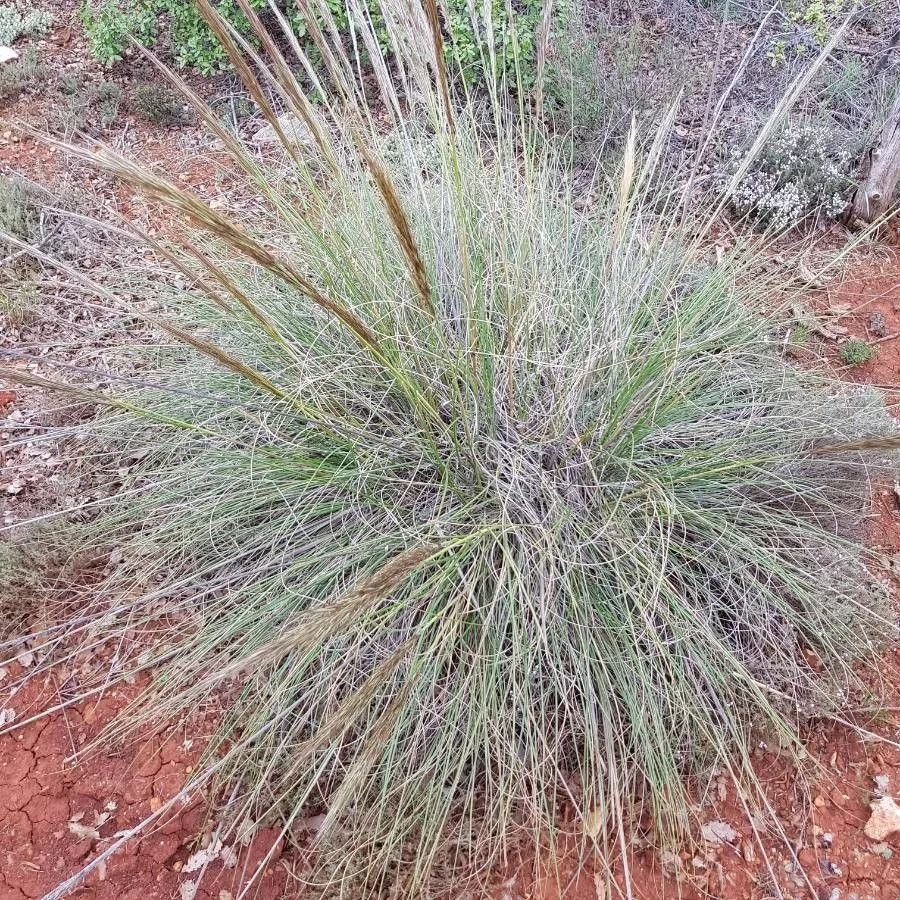
Author: L.
Bibliography: Amoen. Acad., 4: 266, 1759
Year: 2006
Status: accepted
Rank: species
Genus: Stipa
Vegetable: False
Observations: Unknown
Esparto is a perennial grass indigenous to the semi-arid regions of the western Mediterranean Basin. Scientifically known as Stipa tenacissima, this versatile plant has been recognized and described for centuries, with its formal description dating back to 1759 in the fourth volume of Amoenitates Academicae. It falls under the taxonomic classification of the Poaceae family, which is commonly referred to as the grass family.
Stipa tenacissima thrives in arid and semi-arid environments, particularly those with poor, sandy soils often too harsh for other vegetation. Its robust, fibrous root system is highly adapted to such conditions, allowing it to survive and grow in areas with minimal water availability. This resilience not only helps mitigate soil erosion but also supports local ecosystems by providing shelter and sustenance to various wildlife species.
Esparto has been historically significant due to its economic and cultural importance. The sturdy, fibrous leaves are traditionally harvested and processed into durable materials. For centuries, esparto has been utilized in manufacturing high-quality paper, ropes, baskets, mats, and other artisanal crafts. Its tough fibers contribute to the strength and longevity of these products, making esparto an invaluable natural resource.
In addition to its practical uses, esparto also has ecological benefits. It plays a role in soil stabilization, preventing erosion and desertification in regions where it grows. By forming dense tufts, esparto helps maintain the integrity of the landscape while providing a habitat for various flora and fauna. The plant’s resilience to drought conditions also makes it a vital species in biodiversity conservation efforts aimed at arid and semi-arid habitats.
Though esparto’s scientific exploration dates back to the 18th century, there remain numerous aspects of its biology and ecological impact that are yet to be fully understood. Future studies focusing on its growth patterns, environmental interactions, and potential applications in sustainable practices could shed more light on this remarkable plant.
En: Esparto, Esparto grass, Needle Grass, Alfa Grass
Ar: عذم حلفائي
Eu: Espartzu
Ca: Espart
Nl: Esparto
Eo: Alfo
Fi: Espartohöyhenheinä
Fr: Alfa, Stipe tenace, Halfa
Ka: Ალფა ბალახი
De: Halfagras
Hu: Eszpartófű
Io: Esparto
Gv: Alfey
No: Alfagras, Alfagress
Oc: Espart
Fa: دوخ
Pt: Esparto
Ru: Эспарто
Es: Atocha
Sv: Espartogräs
Taken Oct 25, 2020 by Galiana Elena (cc-by-sa)
Taken May 7, 2020 by Matías Llamas Martinez (cc-by-sa)
Taken Jun 11, 2020 by lopez sergio (cc-by-sa)
Taken Nov 21, 2022 by Grégory legendre (cc-by-sa)
Taken Jun 8, 2021 by Miguel Torres (cc-by-sa)
Taken Jul 1, 2020 by Diego Alex (cc-by-sa)
Taken Apr 24, 2021 by yisus (cc-by-sa)
Taken Apr 24, 2021 by yisus (cc-by-sa)
Taken Dec 27, 2019 by Gema (cc-by-sa)
Taken May 28, 2022 by Zamora Enrique (cc-by-sa)
Taken Sep 9, 2021 by Gayoso Alberto (cc-by-sa)
Taken May 2, 2021 by de las Heras Mari Luz (cc-by-sa)
Taken Apr 24, 2021 by yisus (cc-by-sa)
Taken Aug 17, 2020 by Rojas Erica (cc-by-sa)
Ph maximum: 8.0
Ph minimum: 7.5
Light: 9
Atmospheric humidity: 2
Soil nutriments: 3
Family: Myrtaceae Author: (F.Muell.) K.D.Hill & L.A.S.Johnson Bibliography: Telopea 6: 402 (1995) Year: 1995 Status:…
Family: Rubiaceae Author: Pierre ex A.Froehner Bibliography: Notizbl. Bot. Gart. Berlin-Dahlem 1: 237 (1897) Year:…
Family: Sapindaceae Author: Koidz. Bibliography: J. Coll. Sci. Imp. Univ. Tokyo 32(1): 38 (1911) Year:…
Family: Asteraceae Author: A.Gray Bibliography: Pacif. Railr. Rep.: 107 (1857) Year: 1857 Status: accepted Rank:…
Family: Fabaceae Author: Medik. Bibliography: Vorles. Churpfälz. Phys.-Ökon. Ges. 2: 398 (1787) Year: 1787 Status:…
Family: Aspleniaceae Author: (Cav.) Alston Bibliography: Bull. Misc. Inform. Kew 1932: 309 (1932) Year: 1932…